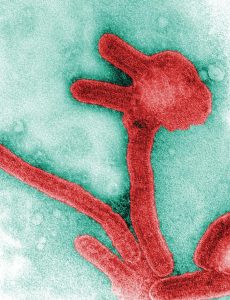NewsDesk @bactiman63
In a follow-up on a report earlier this month, the Ghana Health Service announced following the preliminary finding of two cases of Marburg Virus Disease (MVD) from the Ashanti region on July 7, testing at the Institut Pasteur in Dakar, Senegal corroborated the results.

The two patients – both deceased and unrelated – showed symptoms including diarrhea, fever, nausea and vomiting. One case was a 26-year-old male who checked into a hospital on 26 June 2022 and died on 27 June. The second case was a 51 -year-old male who reported to the hospital on 28 June and died on the same day. Both cases sought treatment at the same hospital within days of each other.
So far, 98 contacts identified those from Sawla-Tuna-Kalba district from Savannah region are currently under quarantine and being monitored. No additional cases of MVD have been identified.
WHO has been supporting a joint national investigative team in the Ashanti Region as well as Ghana’s health authorities by deploying experts, making available personal protective equipment, bolstering disease surveillance, testing, tracing contacts and working with communities to alert and educate them about the risks and dangers of the disease, and to collaborate with the emergency response teams. In addition, a team of WHO experts will be deployed over the next couple of days to provide coordination, risk assessment and infection prevention measures.
“Health authorities have responded swiftly, getting a head start preparing for a possible outbreak. This is good because without immediate and decisive action, Marburg can easily get out of hand. WHO is on the ground supporting health authorities and now that the outbreak is declared, we are marshalling more resources for the response,” said Dr Matshidiso Moeti, WHO Regional Director for Africa.
Subscribe to Outbreak News TV on YouTube
In August 1967, a cluster of patients in Marburg and Frankfurt, in Germany, and in Belgrade (then Yugoslavia, now Serbia), began showing symptoms of an infectious disease – a high fever, chills, muscle ache, and vomiting. The patients worsened over the next few days, until they began bleeding from every orifice in their body, including needle puncture wounds. In total 31 people died.
Three months after this outbreak, virologists in Marburg had discovered the first filovirus, a cousin of the equally-deadly Ebola virus. The virus had been carried by infected African green monkeys from Uganda.
After this first sighting, the virus was then mostly seen in African countries, in bat-infested caves or mines.
Previous outbreaks and sporadic cases of Marburg in Africa have been reported in Angola, the Democratic Republic of the Congo, Kenya, South Africa and Uganda.
The largest known outbreak of Marburg virus, in Angola in 2004, infected over 250 people and had a 90 percent fatality rate.
Marburg is transmitted to people from fruit bats and spreads among humans through direct contact with the bodily fluids of infected people, surfaces and materials. Illness begins abruptly, with high fever, severe headache and malaise. Many patients develop severe hemorrhagic signs within seven days. Case fatality rates have varied from 24% to 88% in past outbreaks depending on virus strain and the quality of case management. Although there are no vaccines or antiviral treatments approved to treat the virus, supportive care – rehydration with oral or intravenous fluids – and treatment of specific symptoms, improves survival. A range of potential treatments, including blood products, immune therapies and drug therapies, as well as candidate vaccines with phase 1 data are being evaluated.
Tanzania: Ebola, Marburg ruled out in outbreak
Tanzania: Mystery illness sickens 13, kills 3 in Lindi Region
Sierra Leone anthrax outbreak update
Nigeria: ‘We have seen an uptick in Monkeypox cases’
14th Ebola outbreak declared over in the DRC
Plague update in Ituri Province, Democratic Republic of Congo


